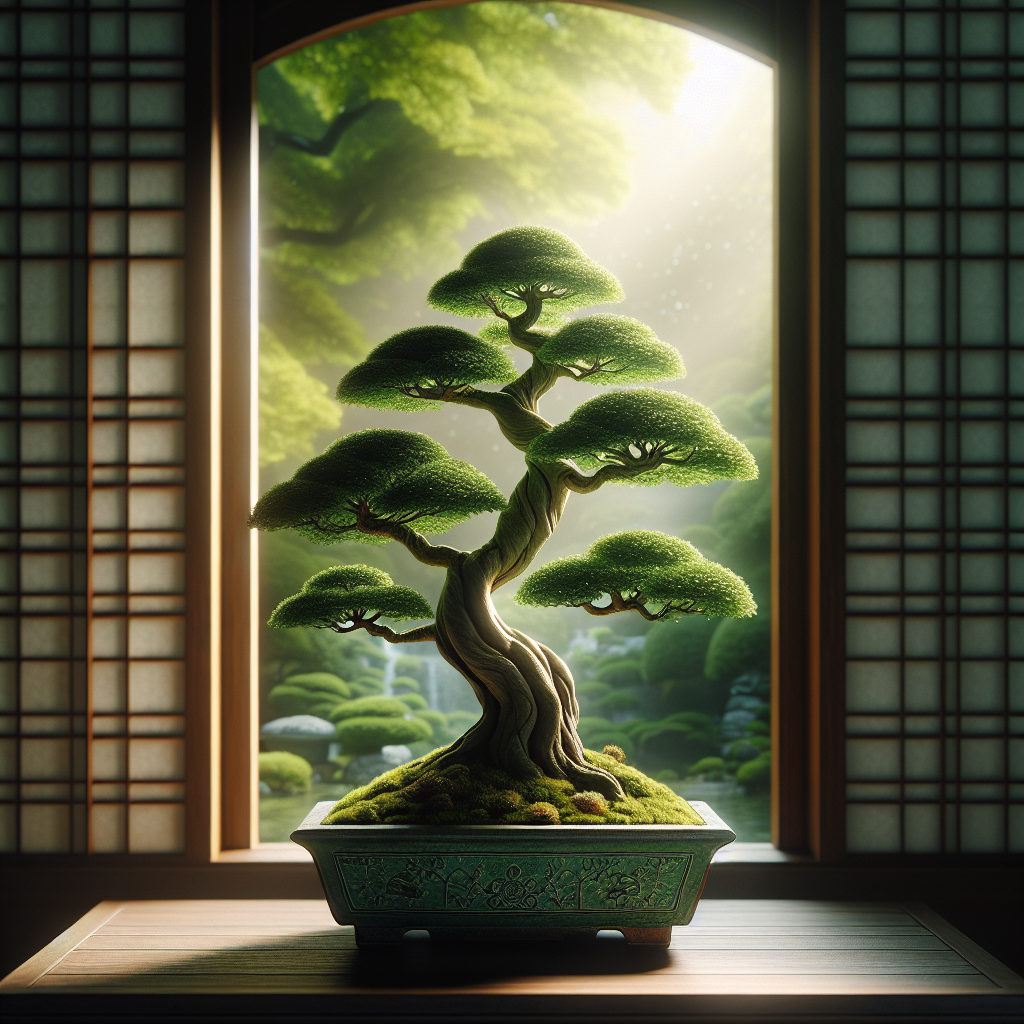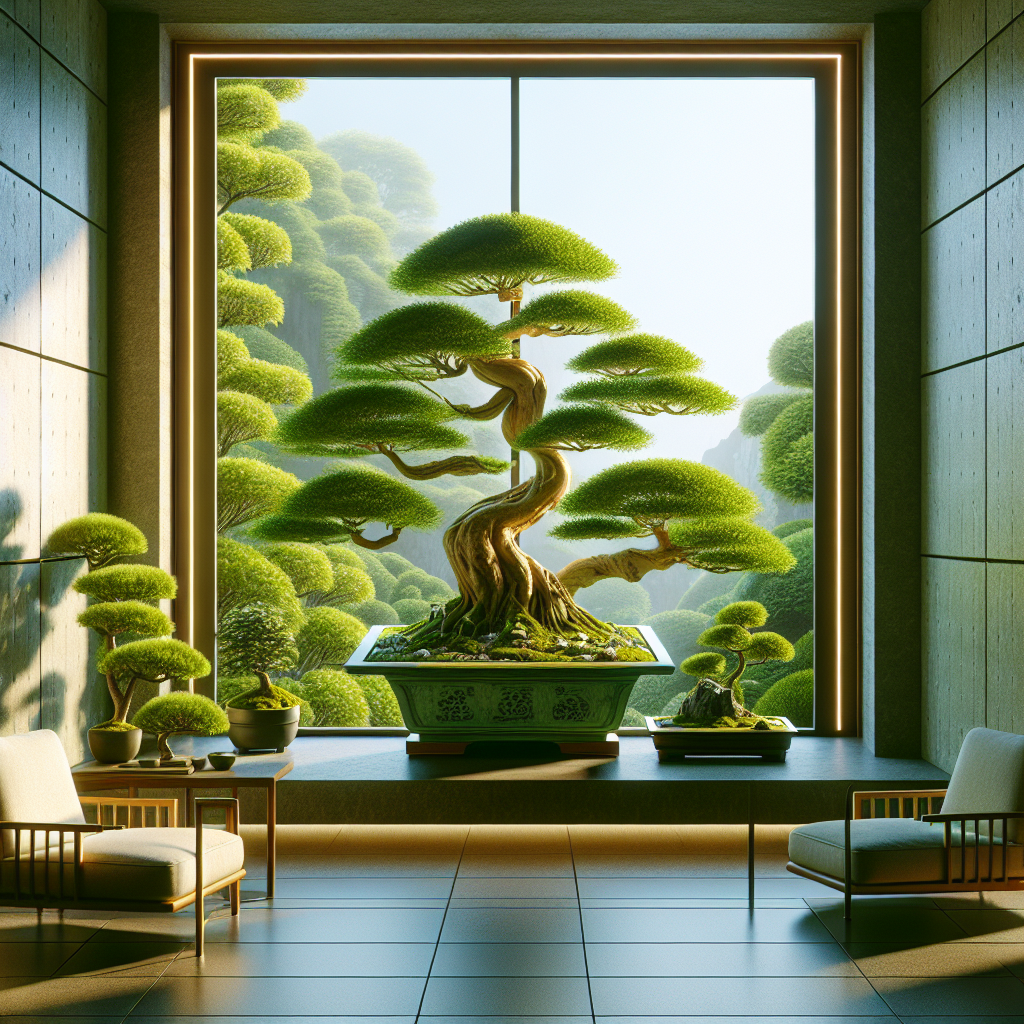Have you ever considered adding a bonsai tree to your home or garden but weren’t sure whether it should be kept indoors or outdoors? In this article, we will explore the pros and cons of indoor and outdoor bonsai trees, helping you make an informed decision on which one is the right choice for you. Whether you prefer the tranquil ambience of an indoor bonsai or the natural beauty of an outdoor bonsai, we will guide you through the factors to consider, so you can find the perfect match for your green thumb.
Understanding Bonsai
What is Bonsai?
Bonsai, a traditional Japanese art form, involves the cultivation and shaping of miniature trees in containers. The word “bonsai” itself means “planted in a container” in Japanese. Rather than simply being tiny plants, bonsai trees are sculpted to evoke the appearance of fully-grown, old trees, representing natural beauty in a confined space.
Origin and History
Bonsai originated in China over a thousand years ago and was eventually adopted by the Japanese, who further refined the art form. Initially, bonsai trees were created as objects of reverence and meditation for Buddhist monks. It was believed that the peaceful and contemplative nature of cultivating these miniature trees brought spiritual tranquility. Over time, bonsai became a popular art form among the Japanese elite and eventually spread throughout the world.
Significance of The Art of Bonsai
The art of bonsai goes beyond mere horticulture; it embodies the harmony between humans and nature. Bonsai encourages patience, discipline, and a deep connection to the natural world. By cultivating and shaping a bonsai tree, practitioners learn to appreciate the beauty found in simplicity and balance. Bonsai also teaches us empathy, as we care for and nurture the tree, understanding that it too is a living being requiring our attention and care.
Types of Bonsai
Different Types of Bonsai Trees
There is a wide variety of bonsai trees available, each with its own unique qualities. Some popular species include the Japanese maple, Juniper, Pine, and Ficus. The choice of bonsai tree depends on personal preference and the desired aesthetic. Some trees are known for their delicate foliage, while others are admired for their gnarled trunks or vibrant flowers.
Indoor Bonsai Trees
Indoor bonsai trees are perfectly suited for smaller living spaces, such as apartments or offices. These trees typically thrive in more controlled environments with stable temperatures and lower light levels. Popular indoor bonsai trees include Ficus, Chinese Elm, and Sageretia.
Outdoor Bonsai Trees
Outdoor bonsai trees require more exposure to natural elements and seasonal changes. They benefit from direct sunlight, varying temperatures, and sufficient air circulation. Species such as Maple, Juniper, and Pine are commonly found in outdoor bonsai collections. The outdoor environment allows these trees to grow in a more natural and robust manner.

Indoor Vs Outdoor Bonsai: A Comparative Study
Growth and Development
Indoor bonsai trees tend to grow at a slower rate compared to their outdoor counterparts. The controlled environment and stable conditions can limit their growth potential. On the other hand, outdoor bonsai trees experience the full range of seasonal changes, which stimulates growth and provides an opportunity for more natural development.
Maintenance and Care
Indoor bonsai trees require careful monitoring of temperature, humidity, and light levels to ensure proper growth. They may need supplemental lighting during darker months or in spaces with limited natural light. Outdoor bonsai trees, while more self-sufficient in terms of light and temperature requirements, require diligent care during extreme weather conditions and protection against strong winds.
Ideal for Beginners?
For beginners, indoor bonsai trees are often recommended due to their relatively easier maintenance requirements. They offer a controlled environment where the learning process can be simplified. However, outdoor bonsai trees can also be suitable for beginners willing to put in the extra effort to understand the specific needs of each tree species and provide proper care.
Pros and Cons of Indoor Bonsai
Convenience of Indoor Bonsai
Indoor bonsai trees offer convenience for those with limited outdoor space or living in urban areas. They can be kept indoors year-round, providing a connection to nature in the comfort of your own home. Indoor bonsai trees also have consistent growth patterns, making it easier to anticipate their needs.
Suitable Environmental Conditions
Indoor bonsai trees thrive in stable environments with moderate temperatures and humidity levels. However, maintaining the ideal conditions can be challenging, especially in regions with extreme climates. Careful attention must be given to avoid sudden temperature fluctuations, dry air, or insufficient light.
Potential Challenges and Limitations
Indoor bonsai trees may not achieve the same level of natural growth and development as their outdoor counterparts. The controlled environment can restrict their size, shape, and foliage density. Additionally, pests and diseases can pose a greater threat to indoor bonsai trees due to the lack of natural predators found outdoors.

Pros and Cons of Outdoor Bonsai
Advantages of Outdoor Bonsai
Outdoor bonsai trees have the advantage of experiencing the full range of seasonal changes, which enhances their overall beauty and increases their resilience. They have the opportunity for more natural growth patterns, larger sizes, and stronger root systems. Outdoor bonsai trees can also benefit from natural pest control and increased air circulation.
Requirements and Challenges for Outdoor Growth
Outdoor bonsai trees require careful consideration of their specific care needs, including exposure to sunlight, protection from extreme weather conditions, and adequate watering. The changing seasons necessitate periodic repotting and pruning to maintain the tree’s health and aesthetics.
Range of Trees Available for Outdoor Bonsai
The range of tree species suitable for outdoor bonsai is vast, providing a wide variety of aesthetics and characteristics. Trees like Maple, Pine, Juniper, and Elm are favored choices for outdoor bonsai due to their natural ability to adapt to changing weather conditions and their attractive features.
Choosing the Right Bonsai for Your Home
Physical Space and Environment
The size and shape of your home will influence the choice of bonsai tree. Larger spaces can accommodate medium or larger-sized trees, while compact spaces may require smaller varieties. Additionally, the microclimate within your home, including temperature, humidity, and light availability, should align with the specific requirements of the bonsai tree species.
Availability of Light
Consider the amount and quality of natural light available in your home. Some bonsai trees thrive in brightly lit areas, while others may prefer more shade. If natural light is limited, supplemental grow lights can be used to provide the necessary light intensity for the bonsai tree’s growth.
Temperature and Humidity
The temperature and humidity levels within your home must match the requirements of the bonsai tree species you choose. Some bonsai trees prefer cooler temperatures, while others thrive in warmer conditions. Monitoring humidity levels and providing appropriate adjustments, such as misting or using humidity trays, can ensure the tree’s optimal growth.
Choosing the Right Bonsai for Your Office
Aesthetics and Impressions
When selecting a bonsai tree for your office, consider the overall aesthetics and the impression you want to convey. Some tree species exude a sense of tranquility and calmness, while others may project energy and vibrancy. The bonsai should complement the office environment and contribute to a positive atmosphere.
Care and Maintenance Constraints
Evaluate the time and effort you can dedicate to care for a bonsai tree in the office setting. Certain species may require more frequent pruning, watering, and repotting, which might not be feasible during work hours. Low-maintenance varieties that can withstand occasional neglect could be more suitable for office spaces.
Size and Scale of the Bonsai
The size and overall scale of the bonsai tree should match the available space within your office. Larger trees may dominate the visual space and create a more striking statement, while smaller trees can add subtle elegance to a desk or shelf. Consider the balance and proportion of the bonsai tree in relation to its surroundings.
Introductory Care for Your Bonsai
Watering Needs
Understanding the watering needs of bonsai trees is crucial for their overall health. The frequency and amount of watering depend on factors such as tree species, pot size, and environmental conditions. It is essential to strike a balance between keeping the soil moist and avoiding waterlogged roots, which can lead to root rot.
Pruning Techniques
Pruning is an integral part of maintaining the shape, size, and overall aesthetics of a bonsai tree. Regular pruning helps to promote branching, improve ramification, and maintain the desired proportions of the tree. Different pruning techniques, such as branch pruning, leaf pruning, and root pruning, should be employed at the appropriate times to ensure the tree’s health and development.
Repotting Your Bonsai
Repotting is necessary to maintain the health and vitality of bonsai trees. It involves carefully removing the tree from its current pot, trimming the roots, and placing it in fresh soil. Repotting allows for root development, prevents root-bound trees, and provides an opportunity to inspect the tree’s overall health and address any potential issues.
Advanced Care for Your Bonsai
Understanding Fertilizers and Nutrients
Proper fertilization is essential for the optimal growth and development of bonsai trees. Various types of fertilizers, such as organic and inorganic options, provide essential nutrients to support the tree’s health. Understanding the specific nutrient requirements of the tree species and applying fertilizers at the correct times and concentrations ensures the tree receives the necessary sustenance.
Training Your Bonsai
Training refers to the intentional manipulation of the bonsai tree’s trunk, branches, and foliage to achieve the desired shape and form. Techniques like wiring, branch bending, and defoliation can be used to guide the tree’s growth and create a visually appealing design. Regular training sessions and monitoring of the tree’s progress are essential for successful bonsai cultivation.
Managing Pests and Diseases
Like all plants, bonsai trees are susceptible to pests and diseases. Regular inspection and prompt action are necessary to prevent infestations and treat any issues that arise. Common pests include aphids, spider mites, and scale insects, while diseases like fungal infections can be managed through proper hygiene, adequate air circulation, and the use of preventive treatments.
Exhibiting and Enjoying Your Bonsai
Displaying Your Bonsai
Bonsai trees are not just meant to be nurtured and cared for; they are also meant to be displayed and appreciated. Consider showcasing your bonsai tree in an appropriate display stand or alcove that enhances its beauty and aesthetics. Positioning the tree at eye level allows for a more immersive experience and greater enjoyment.
Seasonal Changes and Their Impact
Bonsai trees, just like their larger counterparts in nature, go through seasonal changes that significantly impact their appearance. Appreciate the transformation of foliage colors in autumn, the delicate blossoms in spring, and the growth spurt during summer. Understanding these seasonal nuances adds depth to the experience of owning a bonsai tree.
Involvement in Bonsai Communities
Joining bonsai communities, clubs, or workshops can provide valuable support and knowledge-sharing opportunities. Interacting with fellow enthusiasts allows you to exchange ideas, learn new techniques, and appreciate the diverse range of approaches to bonsai cultivation. Participating in exhibitions and competitions also offers a chance to showcase your skills and gain recognition within the bonsai community.
Owning and caring for a bonsai tree is an enriching experience that fosters a deeper connection with nature and cultivates patience and creativity. Regardless of whether you choose an indoor or outdoor bonsai, the key to successful cultivation lies in understanding the specific needs of the tree species, providing appropriate care, and appreciating the beauty of these miniature works of art.








